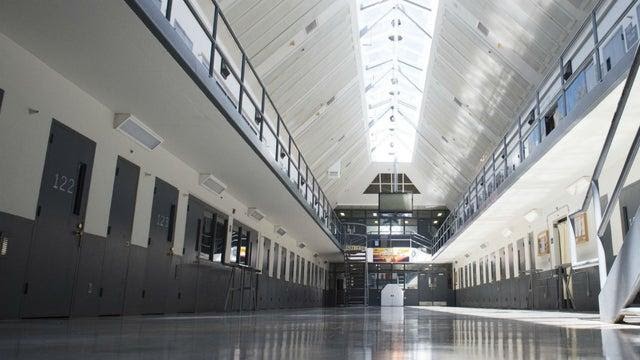BLOG
How To Protect Our Jails From Coronavirus
This is an article written by Dr. Homer Venters who is the former chief medical officer of the New York City Jail System and president of Community Oriented Correctional Health Services (COCHS).

Public health agencies around the world are preparing for COVID-19, the novel coronavirus that has spread from China to multiple regions of the world. We now see more cases outside of China than inside, and we’re also hearing of cases inside the U.S. among people without known travel contact. One critical lesson from our experience with H1N1 a decade ago is worth highlighting: We must integrate our nation’s 5,000 jails, prisons and immigration detention centers with our pandemic response efforts.
In the spring of 2009, we also faced a novel viral threat to health in the form of H1N1, which the CDC now estimates took between approximately 150,000 and 500,000 lives worldwide in the first 12 months of activity. Much of this illness occurred among young people, who lacked antibodies for this strain of flu. Working inside the health service of the New York City jail system, we confronted a wide array of issues in responding to H1N1, from decisions about how to set up surveillance for influenza-like illness, to diagnosis and treatment of suspected cases and isolation of housing areas of the jails where people were ill.
One large advantage we had was that our health service was a division of the nation’s pre-eminent public health department, the New York City Department of Health and Mental Hygiene (DOHMH). In the decade since, I’ve responded to seasonal influenza, pertussis, legionella and many other outbreaks within correctional settings. Here are a few lessons that are critical for sheriffs, commissioners of correction and public health officials to consider.
- When COVID-19 arrives in a community, it will show up in jails and prisons. This has already happened in China, which has a lower rate of incarceration than the U.S. People in the U.S. are incarcerated at a rate of about one million times per month, and the number of staff who go to work and families who visit these places is even greater. Our efforts should focus on the reality that COVID won’t be kept out, but we can manage the impact on health behind bars. The same goes for courts, where judges, defense attorneys and prosecutors may limit court services or even close courts. We dealt with this during H1N1 when incarcerated people couldn’t go to court, even when they had served their sentence and should have been able to go home. Management of COVID-19 will likely result in school and library closures and consideration should be underway concerning the number of people entering jails and prisons and how each step can be re-evaluated and monitored.
- The need for standardized data collection requires including jail and prison health leaders. Most cities and states have a standard set of variables that will go onto a line list or index of every suspected case of COVID-19, and track every one of those people through diagnosis, treatment and, when indicated, quarantine and release. Most jails and prisons are out of the loop when it comes to this process, and they must be included so that whether a person is in jail or in the community, this vital information can be gathered, and care delivered.
- Jails and prisons need to have a plan in place to identify and house together people with suspected and diagnosed COVID-19 and those who are at high risk of serious illness if they become infected. This includes people with chronic illness, those with compromised immune systems and pregnant women. This cohorting was extremely challenging during H1N1. We struggled to match up this public health approach with the operational demands of the jails, which generally house people based on several types of security classifications. In addition, when people are confined to a housing area of a jail or prison, there will be a tendency to keep them there, without the services they are entitled to, and this will drive conflict as time goes on.
- Communication should start now with the people most impacted by this issue, people who are incarcerated, their families and staff who work in these settings. Correctional settings around the nation are often run with tolerance for abuse and neglect of incarcerated people. When public health workers drop into these settings during emergencies, they are often met with skepticism and suspicion by incarcerated people and correctional staff alike. The only path to effective management of COVID-19 in these settings is meaningful partnership that starts now, when plans are being designed, not two months from now when cases are being detected.
- COVID-19 will remind us of a central hypocrisy in our approach to health behind bars. We’ve built the world’s largest collection of jails and prisons, and kept the health services in these places remarkably separate from the rest of our national health systems. The CDC, state departments of health, the Joint Commission and other bodies that promote evidence-based care in our hospitals, ambulatory care clinics and nursing homes are largely absent in these settings. As a result, management of this pandemic will be harder and less effective for incarcerated people, their families and staff in these institutions.
As we struggle to make headway in this specific response, it should remind us that the goals of promoting health and addressing mass incarceration both require that we finally connect these institutions to our community-based systems of health.
Cory Wilson is a Calgary criminal lawyer serving clients in all of Alberta. If you have been charged with a criminal offence or are a suspect in a criminal investigation, call today for a free, no obligation consultation.